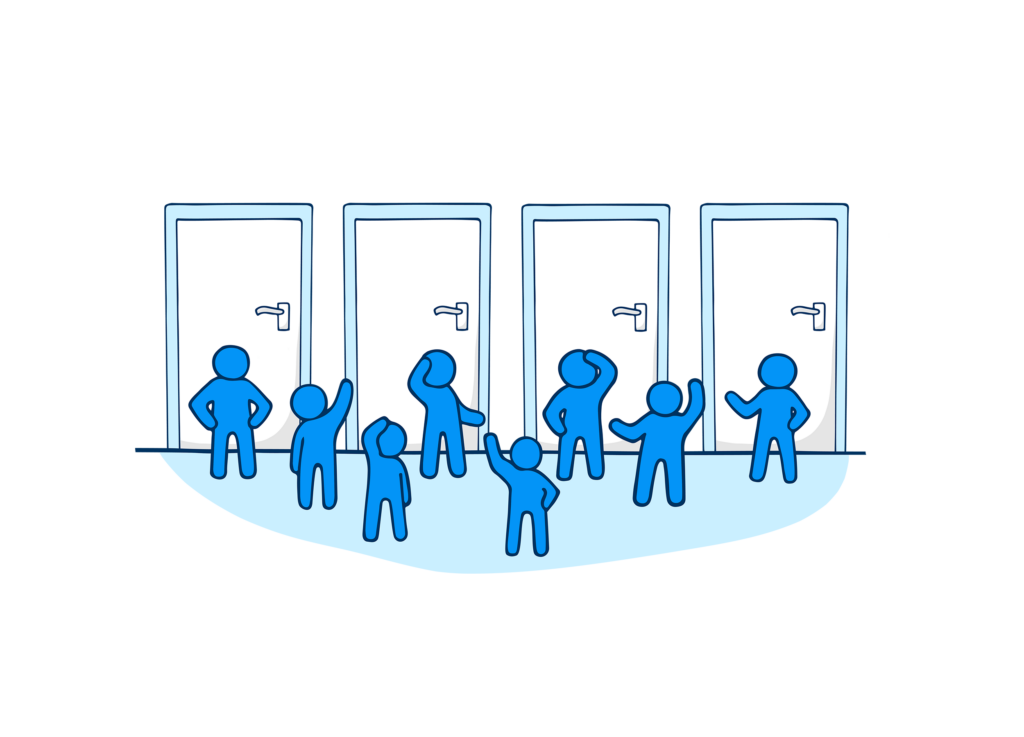There are many different eLearning models out there, but that doesn’t mean they are all created equal or even that they can all be applied to the same organization or business when creating an eLearning course. However, one that offers a significant number of benefits is the Four-Door Model. It allows instructional designers to create compelling and successful eLearning courses quickly and accurately, and can even be used by SMEs and others without formal training as an instructional designer.
What Are the Four Doors?
The key to the Four-Door Model is the four doors that it incorporates. There are several different areas to this framework. While designers or organization decision makers can choose whatever names they wish, the default names are as follows:
• The Library
• The Playground
• The Café
• The Evaluation Center
Other doors can be added if necessary, but these four form the core of the model and the crux of its functionality and benefits.
- The Library: The Library is exactly what it sounds like. It is populated by content of all types and is where learners go to study. This is the meat of the course – the content. In most instances, learners are free to study this content in the fashion of their choosing, moving from module to module or topic to topic as they prefer.
- The Café: The Café is the model’s social nexus or hub. Here, social learning activities take place, such as question games, but it can also include other social options, such as Facebook groups, message boards or forums, user or instructor blogs, and a great deal more. The entire focus here is on socializing and building a stronger group as a whole.
- The Playground: This is where learners go to have fun and unwind with games and other entertainment options, all of which are based on content in the library. Generally, these are what are called “frame-games” and users can choose their preferred difficulty level and play each game multiple times. The beauty of the Playground is that it can be tailored to almost any age, expertise level or amount of education and still remain relevant and engaging.
- The Evaluation Center: Also sometimes called the test center, is where leaners go to take their exams, quizzes and tests. It might contain just a single performance test, or it could contain multiple tests. If an instructional designer allows learners to “test out” to skip modules, those tests will be found here, as well.
The Advantage of the Four-Door Model
There are many benefits found with the Four-Door Model, including the fact that it can be customized to almost any degree and any needs. However, the true advantage is that it allows learners to truly take hold of the material and embark on self-led learning. It also facilitates freedom of study in that learners are able to go about the process in the manner they deem the best fit for them. Expert level learners can jump straight to test taking, while others can engage in games or social activities, while yet others can follow the A, B, C, D approach beginning with the Library and moving through the Evaluation Center.
The Four-Door Model offers immense customization, but also ensures that learners are able to complete modules and coursework in the way that best suits their needs. It is a powerful tool, and can work for virtually any business or organization with the right instructional designers at the helm.
